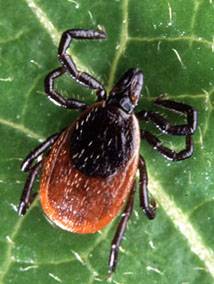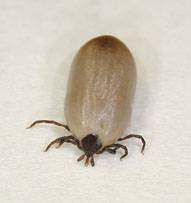Brucellosis in Dogs
Brucellosis is an important venereal disease in many species. It does not usually come up in pet ownership because most pet dogs are not bred. Once someone decides to breed their dog, though, they should know all about this disease, particularly since it can be transmitted to humans.
All dogs to be bred should have a brucellosis test. Active stud dogs should be tested every 6 months.
If you are planning to breed your dog, test your dog and insist that the owner of your dog’s mate produce results of a recent test for your inspection.
Which Type of Brucella
There are ten species of Brucella and while Brucella canis is of most concern for dogs. Dogs can certainly become infected with Brucella abortus from cattle; Brucella melitensis from goats; and Brucella suis from pigs if they are allowed to drink contaminated milk or eat leftover birth membranes, contaminated meat, or aborted young.

Other Brucella species are Brucella ovis, which affects only rams, Brucella neotomae, which affects desert mice, Brucella microti which affects rodents and voles, Brucella ceti and Brucella pinnipedialis, which affect marine mammals, and Brucella inopinata, which has only been found once in a human breast implant infection. Luckily for people, Brucella canis causes much less serious disease in humans than the livestock Brucella but the health department still considers any Brucella infection reportable.
How Dogs get Infected
Dogs like to stick their noses in all sorts of nasty places. They also chew up all sorts of disgusting things. Brucellosis can be contracted sexually, but it can also be contracted by inhalation (sniffing contaminated urine or fetal membranes), through the eyes, or orally (licking contaminated urine or urogenital secretions or chewing up fetal membranes). Urine and saliva from an infected dog are not nearly as rife with organisms as urogenital secretions; it is when breeding and/or whelping is in the picture that the transmission risk becomes high.
When a female dog aborts a pregnancy because of a Brucella infection, she continues to secrete fluids packed with Brucella bacteria for four to six weeks.
Brucella organisms are able to survive in the environment for months if conditions are moist, cool, and dark. Bleach is an effective disinfectant in the environment.
What Happens After Infection?
The organism requires three weeks on average to become evident in the bloodstream. After that, it localizes in the reproductive or urinary tract and either continuously or periodically seeds the bloodstream from there. Lymph nodes can enlarge and possibly the spleen or liver can become inflamed but generally the infected adult dog does not seem sick in the short term. Chronic disease from long-term immune stimulation can result. Diseases produced by long-term inflammation can include:
- Diskospondylitis (inflammation of a disk in the spine)
- Uveitis (deep eye inflammation)
- Multiple joint arthritis
- Glomerulonephritis (kidney inflammation and protein loss)
Most of the time, the only sign is aborted pregnancy between the 45th and 59th day of pregnancy (relatively late in the pregnancy). Classically, the aborted pups appear to have died at least several days prior to abortion as they do not look freshly dead. Abortion does not always appear in this most common form, though. Sometimes, the pregnancy is lost so early in its course that the problem is mistaken for infertility. Sometimes, puppies are stillborn. Sometimes, they are born live and infected.
Testing
Direct culture of the organism from a dead puppy, infected dog’s blood or from secretion is confirmatory but the organism is difficult to isolate in this way. This means we usually depend on immunologic tests. Which test is selected depends on what the test is being used for.
Screening before Breeding
The RSAT (rapid slide agglutination test) is a test that can readily identify negative dogs. That is, if the test comes out negative, the dog can be considered negative. If the test comes out positive, further testing is needed. Up to 60% false positives occur. A test kit is available inside the veterinary hospital and some facilities can perform this test while you wait.
The IFA (Immunofluorescent Antibody) test is a similar screening test, but it must be sent to the reference laboratory. The same guidelines apply negative means negative, and positive means do further tests. That said, if there is a classic history (such as an aborted litter of puppies) along with a positive IFA test, it may not be necessary to do further testing, as the situation is clear.
Further Testing for RSAT or IFA Positive Dogs
There are two tests that fit in this category. The most specific test (meaning the most trustworthy positive value) is the AGID (agar gel immunodiffusion) test. A version of the test called the CPAGID, named for the bacterial protein it detects, is the most accurate of all.
Another test is called a TAT (tube agglutination test). It looks for antibodies against Brucella canis. Antibiotic treatment with tetracyclines can drop antibody levels low enough for the TAT to be negative but this does not necessarily indicate that the infection has cleared. At this time the CPAGID is favored over TAT.
If a dog is to travel to Australia, a TAT test is required as part of the travel documentation. If a dog is to travel to New Zealand, an AGID test is required as part of the travel documentation.
Treatment
First and foremost, the dog in question must be removed from the breeding program by either spay/neuter or euthanasia. The dog can remain as a pet but probably should not be sold due to potential health risks to potential buyers.
If the dog is to remain as a pet, there are several considerations that must be observed:
1) BRUCELLOSIS IS CONSIDERED TO BE A PERMANENT INFECTION! This means that precautions against human exposure must be maintained for the life of the animal.
2) The dog should be confined to the owner’s property for life. This means that veterinary services should be provided by a house call veterinary service and grooming services should be provided by a mobile service. Obviously, these service providers should be warned about the dog’s condition so that proper protective gear can be employed.
3) The dog can NEVER have contact with pregnant women, children, elderly people, people on chemotherapy or anyone considered to have a compromised immune system. Most human cases are mild and flu-like, but certain “at risk” human populations can have more serious consequences.
4) No exposure to any other dogs. All body secretions of an infected dog and contagious.
5) The infected dog will need to be on antibiotics (see below) as long as tests are positive. Ideally, testing (such as gel immunodiffusion) should be done monthly. Antibiotics can be discontinued as long as tests are negative but they will invariably become positive again eventually necessitating more antibiotics.
ANTIBIOTIC TREATMENTS
Tetracycline and Streptomycin
In this regimen, tetracycline is given twice daily for a month, and injectable streptomycin is given daily for the first and last week of the month. In one study, over half the dogs were considered cured with this regimen, but currently, streptomycin is difficult to come by (as it is considered old-fashioned and has few uses at this time).
Minocycline and Streptomycin
Minocycline and doxycycline are derivatives of tetracycline that can also be used to treat brucellosis, but neither is effective when used alone. Again, four weeks of treatment is needed. Minocycline is used once daily while the aminoglycoside is used daily during the first and last week.
Lack of availability of streptomycin has been a problem in treating this condition. Aminoglycosides such as gentamycin have been proposed as substitutes but they are not as effective. Quinolone antibiotics such as enrofloxacin have also been proposed as substitutes, and are much less toxic than aminoglycosides; they may emerge as the best replacement for streptomycin.
Doxycycline and an Aminoglycoside
This regimen requires daily injections of the aminoglycoside antibiotic for the first and last weeks of a four-week course of treatment. The aminoglycosides are a class of antibiotics that has some very real negative effects on the kidney and so a longer course is not without risk. Monitoring may be needed. Newer literature suggests replacing the aminoglycoside with rifampin.
Because of the potential for human exposure, euthanasia has been encouraged for dogs confirmed to be positive. In some states, euthanasia of positive dogs is mandatory. If you choose to keep a positive dog for a pet, see the links below to minimize contact with infected body fluids.
Keeping Brucella Out of the Kennel
A new dog for a breeding kennel should be isolated for one month. Two Brucella tests two to three months apart should be adequate to confirm negativity (it takes 8-12 weeks from infection for tests to turn positive).
If an infection is detected in a kennel, the entire kennel population should be evaluated and re-screened every 3 months. The kennel should be quarantined until all dogs have tested negative three times with 3 months between tests. Positive dogs should be removed from the kennel.



